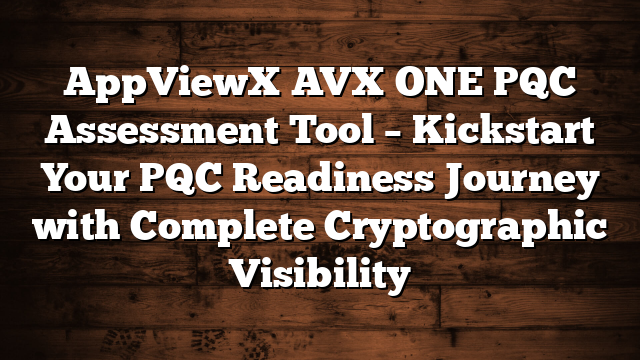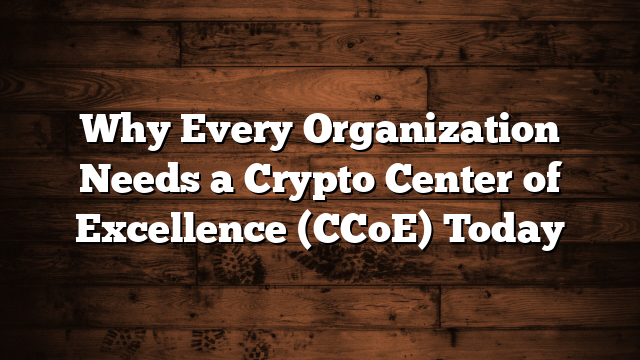
Uncategorized
Recently, the CA/Browser (CA/B) Forum approved Ballot SC-081v3, launching a gradual reduction of public TLS certificate lifespans—from today’s 398 days down to just 47 days by 2029. This landmark change ranks among the biggest in PKI in recent years and is already driving intense conversations about how reduced validity periods will reshape certificate lifecycle management (CLM) workloads and operations.
Here’s a break down of what the TLS validity reduction timeline looks like and the corresponding increase in CLM workload:
| Year |
Max Validity |
Renewal Frequency |
Workload Increase |
| Now |
398 days |
1 renewal/year |
– |
| March 15, 2026 |
200 days |
2 renewals/year |
2× |
| March 15, 2027 |
100 days |
4 renewals/year |
4× |
| March 15, 2029 |
47 days |
12 renewals/year |
12× |
Essentially, by March 15 2029, certificates will need to be renewed every month—a big shift from the once-a-year cadence that PKI and security teams are used to now.
And it’s not just the renewal frequency that’s changing. The domain validation reuse period will also shrink to just 10 days by 2029. This means PKI and security teams will need to perform domain validation more frequently and accurately to avoid certificate issuance delays.
Although this shift unfolds over the next four years, the initial reduction to 200-day certificates takes effect in less than a year from now, doubling your renewal workload almost immediately. Given the tight prep window, the sooner you start planning, the better prepared you will be to handle increased renewal workloads by next year (2026).
Why Is This Happening?
At first glance, moving from annual to monthly certificate renewals feels like a monumental shift—and it is. In fact, it’s a full rethink of how TLS certificates have been managed for years.
But this change is necessary—and overdue. Think of it like changing the locks on your doors more frequently. It becomes costly and more difficult for attackers to break the locks that are regularly changing and even if they do break the lock, they only have a short window for misuse, limiting potential damage significantly.
And, more frequent domain validation (every 10 days) means certificates are always issued based on up-to-date, accurate ownership information—preventing mis-issuance and boosting trust in your infrastructure.
Yes, it’s more work, but it promotes stronger security—and with quantum computing on the horizon, that’s a trade-off we cannot afford to ignore.
You Must Prioritize Post-Quantum Cryptography (PQC) and Shorter TLS Validity Readiness
How to Prepare for Monthly Renewals
There is a good reason for shortening TLS certificate lifespans: to push organizations toward full CLM automation and crypto-agility.
Certificate management might look straightforward—enroll, provision, install, renew, and done. But in reality, it’s a complex and layered process, involving domain validation, endpoint binding, configuration checks, discovery, alerts, policy enforcement, and monitoring for cryptographic hygiene. That’s a lot of moving parts—and they all have to happen on time, in the right order, and in sync.
Relying on spreadsheets, separate CA-specific tools, and manual processes for all these processes won’t cut it when you’re juggling thousands of certificates across hybrid and multi-cloud environments. Automation and crypto-agility are the only ways to keep pace with monthly renewals.
AppViewX AVX ONE CLM: A Complete End-to-End CLM Solution for Crypto-Agility
Although the focus now is on automating renewals, it is just the starting point for the 47-day TLS transition. True readiness demands a full-spectrum certificate lifecycle management (CLM) solution that is efficient and crypto-agile (that can adapt to changes seamlessly now and in the future).
Achieving this means embedding three core capabilities into every step of the CLM process: Visibility, Automation, and Policy Control. AppViewX AVX ONE CLM is built precisely to deliver that–enabling crypto-agility. Here’s how we can help in the context of the shift to 47-day TLS.
1. Complete Certificate Visibility
- Smart Discovery: Flexible scanning methods to automatically discover your public and private trust certificates from your IP networks, managed devices, cloud accounts, CAs, Kubernetes clusters, and CT logs. You can run these scans on demand or at scheduled intervals to continually discover new certificates.
- Centralized Inventory: Consolidate all discovered certificates in a centralized inventory along with essential certificate information such as the certificate location, owner, issuing CA, expiry date, chain of trust, crypto standards, and more. This inventory serves as a single source of truth for all certificate types, from any public or private CA, across every endpoint, to help you effectively monitor certificate expirations, prevent outages, and mitigate vulnerabilities.
- Actionable Insights: Use dedicated Short-Lived TLS dashboards to pinpoint your current certificate validity periods—and get ahead of the 200-day (March 2026), 100-day (March 2027), and 47-day TLS (March 2029) transitions.
- Alerting: Custom alerts for certificate expiry notifications are sent to certificate owners to ensure timely renewals, approvals, or escalations. Alerts can be delivered via emails for manual actions or via simple network management protocol (SNMP) traps for automation and integration with ITSM and SIEM solutions.
Certificate Lifecycle Management with Visibility, Control and Insights – All in One Place
2. Powerful Automation
- Closed-Loop Renewals: Unlike any other vendor in the market, AVX ONE CLM handles renewals end-to-end. From generating the key pair and CSR to submitting it to the appropriate Certificate Authority (CA), retrieving the renewed certificate, installing it, and binding it to the correct endpoint or application, every step is automated and seamlessly managed. This helps ensure the new certificate is fully configured and ready to use and eliminates the risk of certificate misconfigurations, vulnerabilities, and outages.
- CA-Agnostic Control: AVX ONE CLM works with every major public and private CA, centralizing discovery, renewal, and management of all your certificates in a single console. This means your PKI and security teams can work from a single consolidated tool for enterprise-wide CLM vs fragmented CA tools without complete visibility.
3. Automation Workflows:
- Out-of-the-box Workflows: AppViewX AVX ONE CLM offers an extensive catalog of pre-built workflows for automating routine certificate tasks like alerting/escalations, enrollment, provisioning, and installation, including the last-mile action of endpoint binding.
- Customizable Workflows: No two PKI environments are the same. That’s why AVX ONE CLM’s automation framework is designed to allow deep customizations. Using a drag-and-drop visual workflow builder, you can fully customize workflows to tailor CLM processes to your unique needs. Whether it is implementing one-click approvals and renewals, or fully automating the entire renewal and provisioning process as zero-touch, AVX ONE CLM can accommodate that in your environment. For example, you can automate public TLS certificate issuance via ACME or customize ServiceNow workflows with layered approvals to align with your internal policies.
- Broad Integration Ecosystem: AppViewX offers extensive pre-built integrations with public and private CAs, Cloud providers, DevOps toolchains, ITSM platforms like ServiceNow, MDM solutions like Microsoft Intune, and more for streamlining certificate management across cross-functional teams. In addition, REST APIs enable custom integrations—so you can automate exactly the way your environment demands.
- Auto-Enrollment Protocols and ACME Support: AVX ONE CLM works with all the major auto-enrollment standards—ACME included—so you get the fastest path from certificate issuance to installation and renewal. But ACME by itself only tackles part of the challenge: it automates issuance and renewal, but it doesn’t discover certificates in your environment, enforce your security policies, or cover every PKI use case. That’s where AppViewX steps in. By integrating ACME into a full-featured CLM framework, AVX ONE CLM gives you the speed of ACME with end-to-end visibility, governance, and compliance—so there are never any gaps in your certificate management.
4. Continuous Policy Control
- Zero-Touch Policy Enforcement: Enforce policies to gradually enforce shorter TLS lifespans by defining the use of approved CAs, crypto-standards, and more through automation and eliminate rogue/non-compliant certificates.
- Granular Role-Based Access Control (RBAC): Shrinking TLS lifespans mean more certificates—and often more CAs—to manage. Implementing RBAC helps set clear permissions for who can request, approve, and issue certificates, preventing CA and certificate sprawl. At the same time, it empowers your cross-functional teams with certificate self-service, so they can request and issue security-approved certificates on their own, without extra handoffs.
- Complete audit trails: Track every action with detailed logs to simplify external and internal audits. Generate regular compliance reports to keep up with industry and regulatory standards.
Lean Into This Change for a More Resilient Tomorrow
Shorter certificate lifespans aren’t just about creating more work (even if it feels that way right now). They’re about making your organization more secure with faster certificate rotations, smaller attack windows, and up-to-the-minute domain validation. So, it is important to see this 47-day TLS validity shift as an opportunity to level up your PKI and CLM practices. With the right end-to-end CLM solution in place, what feels like a daunting jump can become a competitive advantage: real-time visibility, automated renewals, and built-in compliance.
To learn more about AppViewX AVX ONE CLM and to see how it can help you prepare now for shorter validity TLS, request a demo.

Uncategorized
Quantum computing is not some far-off theory anymore, and the threat to today’s encryption is real with the clock running for organizations to be resilient. And for banks and finance organizations sitting on mountains of sensitive data, the urgency to prepare for post-quantum cryptography (PQC) is growing.
With Q-day (the day a powerful quantum computer breaks today’s RSA and ECC algorithms) possibly arriving as early as 2028, today’s encryption won’t hold for much longer. That puts financial institutions—prime targets with high-value customer data, transactions, and proprietary models—at risk of cyberattacks targeting broken encryption.
If any industry should be leading the charge on post-quantum cryptography, it is financial services. Not just because the risks are high—but because the fallout from a cyberattack would be catastrophic. Around the world, regulators and industry groups are sounding the alarm and laying out roadmaps to guide financial institutions toward PQC readiness. In this blog, let’s dive into what that really means and why now is the time to start preparing.
The Fast Approaching Quantum Threat
Quantum computing threats are accelerating beyond early predictions. While today’s quantum computers can’t yet break our strongest encryption, the hardware required will close the gap rapidly. What felt like a 2030s problem now threatens to arrive earlier. This means today’s widely used asymmetric algorithms like RSA and ECC are at high risk of being cracked by then, putting critical financial systems and data at serious risk.
Moreover, “Harvest Now, Decrypt Later” attacks are underway. Threat actors are capturing encrypted data today so they can decrypt it in the future using powerful quantum computers. That means sensitive financial records, customer data, intellectual property, and internal communications could all be exposed down the line—even if they’re presumed to be secure right now.
For financial organizations handling high-value data that needs to be stored and protected for years to come, the message is clear: don’t wait—begin your preparation for PQC migration today. Waiting until quantum threats are visible or until the threat becomes imminent could lead to data breaches, hefty financial losses, and lasting reputational damage.
Why PQC?
Think of the NIST approved PQC encryption algorithms as the new vault for your most critical assets—built on mathematical problems so tough that neither today’s supercomputers nor tomorrow’s quantum computers can crack them. By swapping in PQC algorithms, you can lock down customer data, preserve transaction integrity, and ensure long-term privacy against quantum‑powered attacks.
You Must Prioritize Post-Quantum Cryptography (PQC) and Shorter TLS Validity Readiness
But there is an even bigger win: retroactive protection. When PQC algorithms are in place, any encrypted data an attacker harvests today stays unreadable tomorrow—even by the most powerful quantum computers. In short, PQC protects both your future communications and everything you’re securing now.
Key Roadblocks to Post-Quantum Cryptography Adoption
Post-quantum cryptography promises unparalleled security, but rolling it out isn’t straightforward. Previous migrations—like SHA-1 to SHA-2—spanned over a decade; transitioning to quantum-secure algorithms is even more complex—and will demand significantly more time and resources.
- Lack of Cryptographic Asset Visibility
There is no centralized view of keys and certificates scattered across on-prem servers, cloud environments, endpoints, and third-party services. Security teams are unaware of where sensitive encryption lives or how it’s used. That insight gap makes it significantly harder to assess quantum-risk exposure or prioritize migration efforts.
- Integration and Performance Hurdles
Quantum-safe algorithms behave very differently from today’s classical algorithms: they use larger keys, produce bulkier signatures, and demand more compute power. As a result, applications, protocols, and hardware modules often require substantial code rewrites, deep testing, and workflow overhauls—yet real-world PQC expertise remains scarce, making staffing these projects a struggle.
- Operational Burden Without Disruption
It all must happen without disrupting critical services or breaching data-retention and compliance mandates. That means extracting legacy encryption from software and hardware, modernizing infrastructure, updating policies, and coordinating cross-team migrations flawlessly—because any slip-up could stall trading platforms, payment systems, or customer portals.
Without a clear, step‑by‑step roadmap, financial institutions risk falling behind as quantum threats materialize. To stay ahead, organizations must start planning, testing, and laying the groundwork for a smooth and secure transition to PQC.
Global Momentum for PQC Adoption
PQC is now a global priority. In the United States, the National Institute of Standards and Technology (NIST) is leading the charge with formal efforts to standardize PQC algorithms that can withstand quantum-level threats.
Over the last two years, NIST has finalized and published three official standards:
- FIPS 203 (ML-KEM) – The primary standard for general encryption
- FIPS 204 (ML-DSA) – The primary choice for digital signatures
- FIPS 205 (SLH-DSA) – A digital signature algorithm designed as a fallback option in case vulnerabilities are discovered in ML-DSA.
NIST’s roadmap also includes consideration for two additional algorithms: Falcon and HQC (Hamming Quasi-Cyclic). Once standardized, HQC will provide another option for key encapsulation mechanisms (KEM), while Falcon will support quantum-resistant digital signatures.
Global Guidance on PQC Migration for Financial Organizations
Several countries across the world have released roadmaps for PQC readiness and transition to spur real progress on post-quantum cryptography, especially in the finance sector.
1. NIST’s Deadline
NIST has laid out two critical deadlines: by 2030, classical cryptographic algorithms will be deprecated, and by 2035, they’ll be fully phased out. That’s not as far off as it sounds, especially for financial institutions managing complex infrastructures and long-lived data.
2. Europol’s Call to Action (QSFF – Feb 2025)
In February 2025, Europol’s Quantum Safe Financial Forum (QSFF) issued a clear call to action for financial institutions, vendors, and policymakers to jump into PQC migration without delay, recommending that they:
- Prioritize PQC adoption – Make the transition to quantum‑safe cryptography a top strategic objective.
- Coordinate roadmaps – Align goals planning and implementation of PQC across stakeholders.
- Use a voluntary framework – Leverage regulator‑industry partnerships instead of new laws.
- Modernize crypto governance – Treat this as an opportunity to enhance key and certificate management practices.
- Foster global collaboration – Run joint pilots and share insights across private and public sector actors on quantum-safe initiatives.
3. The UK’s NCSC Milestones
The United Kingdom’s National Cyber Security Centre (NCSC) is also urging the banking and financial services sector to act early on PQC. To help organizations stay on track, the NCSC has outlined three key milestones:
- 2028 – Complete discovery of all cryptographic assets
- 2031 – Migrate critical systems to PQC
- 2035 – Achieve full migration across all systems, services, and products
4. Switzerland’s Seven‑Step Roadmap (FIND)
Switzerland, too, is echoing the urgency. The Swiss Financial Innovation Desk (FIND) recently released its Action Plan to a Quantum-Safe Financial Future, providing a clear, seven-step roadmap to help financial institutions take the lead in preparing for quantum risk:
- Establish quantum risk governance
- Assess impacted business and technology components
- Minimize new legacy through quantum-safe procurement
- Address immediate “Harvest Now/Decrypt Later” risks
- Implement a structured PQC migration plan
- Align with industry standards and regulatory expectations
- Continuously review and refine your quantum strategy
For financial institutions worldwide, this action plan offers a practical playbook to stay ahead of the curve and build long-term resilience against quantum threats.
Get PQC-Ready Today to Power Quantum-Safe Innovation Tomorrow
As financial services race to deliver faster and smarter experiences, post‑quantum cryptography is more than a security upgrade—it’s a strategic advantage. Leading global banks, including JPMorgan, HSBC and Intesa Sanpaolo, are already investing in quantum computing to achieve breakthroughs in credit scoring, fraud detection, and pricing models. But without weaving PQC into your long‑term roadmap, those quantum investments won’t pay off. Transitioning to PQC and building true quantum resilience is the only way to lock out tomorrow’s threats, safeguard customer trust, and fully capitalize on quantum’s promise for the finance sector.
To help get your PKI and certificate infrastructure ready for the PQC shift, AppViewX AVX ONE CLM accelerates your PQC readiness with end-to-end certificate lifecycle management and crypto-agility, giving you comprehensive visibility, closed-loop automation, and complete policy control of your certificates—all in one powerful solution.
Additional AppViewX Solutions for PQC Readiness
- PQC Assessment Tool – A purpose-built solution designed to help organizations prepare for the PQC migration by generating a Cryptographic Bill of Materials (CBOM), delivering a PQC readiness score, and providing remediation steps by scanning code, dependencies, configurations and certificates in enterprise environments.
- PQC Test Center – A dedicated free online resource built to help you assess your organization’s PQC readiness by generating and testing quantum-safe private trust certificates prior to their integration into existing systems, applications, workloads, and machines.
- PQC-Ready PKI – A modern, agile, and secure private PKI solution, designed to support PQC-enabled certificate issuance.
Explore AVX ONE CLM or talk to one of our experts today to get started!

Uncategorized
Saving energy has never been this fun—earn Samsung rewards while going green.
The post Level Up Your Energy Savings with SmartThings and Earn Rewards appeared first on SmartThings Blog.

Uncategorized
As the reality of quantum computers capable of breaking today’s encryption algorithms gets closer and closer, the urgency around post-quantum cryptography (PQC) is growing fast. Since NIST announced the first set of standardized PQC algorithms in August 2024 and a timeline for implementation, governments worldwide have launched official roadmaps and guidance to drive organizations toward PQC readiness and transition.
A core aspect of that readiness is crypto-agility—the ability to quickly and safely replace cryptographic algorithms across protocols, applications, hardware, software, and infrastructure without disrupting operations. It’s not just about upgrading encryption; it’s about doing it seamlessly, at scale, and with resilience.
However, crypto-agility starts with one fundamental aspect: complete cryptographic visibility.
To prepare for PQC, you need a comprehensive inventory of all cryptographic assets across your environment—certificates, keys, algorithms, configuration files, and their dependencies across devices, applications, workloads, and pipelines. This visibility forms the backbone of your PQC readiness strategy, helping you understand quantum exposure, prioritize high-value assets, and plan a risk-informed migration.
The Visibility Gap
Here’s the challenge: most organizations still use spreadsheets, manual processes, fragmented CA tools or home-grown dashboards to monitor and manage digital certificates. Essential certificate information, such as the certificate location, owner, issuing CA, and crypto standards, is either poorly documented or not documented at all. These outdated approaches leave major blind spots, making it nearly impossible to gain the visibility needed to take that first crucial step toward PQC readiness.
Introducing the AppViewX AVX ONE PQC Assessment Tool
A single, unified view of your cryptographic environment can make all the difference, especially when preparing for the shift to post-quantum cryptography (PQC).
The AppViewX AVX ONE PQC Assessment Tool is built to provide deep visibility and a centralized view of your cryptographic environment so your teams can prepare for PQC with confidence.
Aligned with NIST’s PQC migration guidance, the tool systematically scans hybrid and multi-cloud infrastructures and CI/CD pipelines to identify every instance of quantum-vulnerable algorithms within codebases, configurations, dependencies, and certificates.
It consolidates all findings into a single console, so your cross-functional teams (PKI, security, DevOps, and others) get the clarity required to prioritize remediation efforts, ensure compliance, and execute a seamless transition to PQC.
You Must Prioritize Post-Quantum Cryptography (PQC) and Shorter TLS Validity Readiness
What It Scans:
- Code: Detects usage of quantum-vulnerable algorithms in code
- Dependencies: Identifies weak cryptographic libraries
- Certificates: Inspects algorithms in active certificates
- Configurations: Flags insecure protocols and weak ciphers
The tool doesn’t just detect issues—it empowers you to act. It auto-generates a detailed Cryptographic Bill of Materials (CBOM), calculates your PQC readiness score, and offers clear, step-by-step remediation to help your PKI, security and DevOps teams replace vulnerable encryption with quantum-safe alternatives.

Other Key Features
- Easy CBOM Exports: Generates a comprehensive CBOM report in industry-standard CycloneDX or CSV formats for easy exports.
- Intuitive Dashboards: Provides executive dashboards, PQC readiness scores, drill-down views, and exportable reports to help you with both high-level overviews and tactical analysis.
- Automated Certificate Discovery: Automatically discovers all digital certificates, along with their associated applications, devices, and endpoints—so you can gauge endpoint-level PQC readiness and streamline future certificate migrations.
- CI/CD Pipeline Integration: Integrates with your CI/CD pipeline, supporting GitHub and AWS CodeBuild ( GitLab and Jenkins coming soon) to enforce PQC checks and auto-remediation within your existing DevOps workflows.
- Seamless Platform Sync: Allows you to upload your CBOM directly into AppViewX AVX ONE for unified visibility into your enterprise PQC readiness status.
You can use the Assessment tool either as a standalone tool or integrate it into your CI/CD pipelines (including GitHub Actions and AWS CodeBuild) based on your need. When coupled with the AVX ONE Certificate Lifecycle Management (CLM) and PKI platform, you get continuous compliance, seamless crypto-agility, and a faster path to post-quantum readiness across containers, clouds, and code.
No more guesswork. No more fragmented efforts. Just complete, continuous visibility—right where your teams need it.
To explore these features in more detail and see everything the PQC assessment tool can do, sign up here.
More PQC Readiness Solutions from AppViewX
- AppViewX PQC Test Center: A dedicated free online resource to assess your organization’s PQC readiness by generating and testing quantum-safe private trust certificates before their integration into existing systems, workloads, and machines. Quickly set up your own quantum-safe PKI hierarchy and generate PQC-ready certificates and keys to test their compatibility in your environment.
- Crypto-Agility with AVX ONE CLM: A complete certificate lifecycle management solution providing complete discovery, greater visibility, end-to-end lifecycle automation, and continuous policy control of your cryptographic ecosystem.
- PQC-Ready PKI: AVX ONE PKIaaS is a modern, agile, and secure PKI-as-a-Service with full support for the new NIST-standardized PQC encryption algorithms –ML-DSA (FIPS 204), SLH-DSA (FIPS 205), and Falcon. You can seamlessly issue PQC-enabled certificates for internal PKI use cases and take a proactive approach to PQC migration. AVX ONE CLM integrates with AVX ONE PKIaaS to help you discover, manage, issue, and automate the lifecycles of all certificates—legacy, hybrid, and PQC-ready certificates—at scale and speed.
To get started on your PQC readiness journey, talk to an expert at AppViewX today.

Uncategorized
Discover how SmartThings routines bring ease, energy, and calm to your everyday life.
The post Lights, Coffee, Action: Routines That Work For You appeared first on SmartThings Blog.

Uncategorized
Not long ago, cryptography management was a quiet, behind-the-scenes task. TLS certificates had long validity periods, post-quantum cryptography (PQC) felt like a distant conversation, and maintaining an up-to-date crypto inventory wasn’t a top priority.
Fast forward to 2025, and the landscape has shifted dramatically. TLS certificate lifespans are shrinking, thanks to CA/Browser Forum mandates. PQC is no longer theoretical—NIST has standardized PQC algorithms, and migration planning is well underway. Meanwhile, regulations are tightening, cyber threats are evolving, and crypto-agility has become a business-critical priority.
Yet, many organizations aren’t ready for the challenges these changes present. While cryptography is embedded everywhere, visibility is limited, cryptographic operations are fragmented, and policies are outdated. Achieving crypto-agility seems impossible when maintaining basic crypto hygiene is already daunting.
As these challenges mount, forward-looking enterprises are now starting to implement an organizational framework focused on improving cryptography and how it is managed: the Crypto Center of Excellence (CCoE).
So, What Exactly Is a Crypto Center of Excellence (CCoE)?
A Crypto Center of Excellence is a framework that brings together people, processes, and technology to oversee and manage an organization’s cryptographic strategy and operations. The primary goal of a CCoE is to serve as the central authority, ensuring cryptographic practices are standardized, efficient, and aligned with the organization’s security objectives.
Key responsibilities of a CCoE include:
- Centralizing visibility into certificates, keys, and trust stores to ensure awareness and oversight
- Defining crypto policies and standards, such as algorithms, key sizes, and usage limits, to promote consistency and enable better governance
- Standardize crypto operations (certificate and key lifecycle management) across business units to mitigate the risk of crypto-related outages and vulnerabilities
- Align cryptographic practices with zero-trust architecture and secure DevOps methodologies to enhance overall security posture
- Ensure audit readiness and compliance with industry standards and regulations
- Develop strategies and implement solutions to achieve crypto-agility, enabling proactive responses to emerging challenges like transitioning to post-quantum cryptography
You Must Prioritize Post-Quantum Cryptography (PQC) and Shorter TLS Validity Readiness
What Does a Core CCoE Team Look Like?
A well-structured CCoE brings together cross-functional experts:
- CISO (Crypto Governance Lead): Sets the overarching cryptographic strategy, defines risk thresholds, and oversees policy enforcement.
- Cryptography Architect: Designs the crypto architecture, including algorithm selection, protocol design, and key lifecycle management.
- PKI/KMS Expert: Leads the deployment and integration of Public Key Infrastructure (PKI), Certificate Lifecycle Management (CLM), Hardware Security Modules (HSMs), and Key Management Systems (KMS).
- Identity and Access Management (IAM) Architect: Develops and governs identity-centric cryptographic access policies across users, devices, and services, ensuring alignment with zero-trust principles.
- Compliance & Risk Officer: Ensures that cryptographic practices align with industry standards and regulations, such as NIST, ISO 27001, PCI-DSS, GDPR, HIPAA, and others.
Depending on the organization’s size and complexity, the CCoE may also include additional operational stakeholders like PKI Administrators, Key Management Administrators, Security Operations Analysts, DevSecOps or Automation engineers for overseeing certificate and key lifecycle operations.
The Real-World Benefits of a CCoE
A CCoE isn’t just a conceptual framework—it’s a practical solution that offers tangible value:
- Operational Efficiency and Cost Savings: By centralizing and automating cryptographic operations, a CCoE cuts complexity and streamlines processes. This helps minimize errors, accelerate workflows, and significantly cut operational costs.
- Enhanced Security Posture and Improved Compliance: With deep visibility and automation, a CCoE enables swift identification and remediation of vulnerabilities. Through strong policy enforcement, a CCoE ensures that cryptographic practices align with regulatory requirements and internal policies, reducing the risk of data breaches and maintaining compliance.
- Crypto-Agility: A CCoE brings together visibility, automation, and policy control of cryptographic operations to ensure your organization is always ready to address emerging threats, technological shifts, and regulatory changes, such as 47-day TLS certificates, PQC adoption, and browser distrust issues.
AppViewX can help you implement crypto-agility and start preparing today for Post-Quantum Cryptography
Why Now? The Urgent Case for a Crypto Center of Excellence
Several key trends underscore the necessity of establishing a CCoE:
- The 47-Day TLS Crunch: By 2029, SSL/TLS certificate lifespans will shrink from 398 days to just 47 days. That’s not a small change—it’s a 12× increase in certificate renewal workload. Suddenly, what used to be a once-a-year task becomes a monthly scramble. In practice, this means that teams still using manual processes (spreadsheets, siloed CA tools) will be unable to manage TLS certificates without implementing automation, which will increase the risk of outages, vulnerabilities, and compliance issues. A CCoE can implement smart automation strategies and enforce policies to manage this complexity effectively and prevent those “fire drill” moments.
- The Great Post-Quantum Cryptography (PQC) Migration: With NIST finalizing the first set of PQC standards and setting 2030 as the deadline for deprecating legacy algorithms (like RSA and ECC), organizations are expected to start migrating now. As part of PQC transition planning, Gartner explicitly advises organizations to “create a crypto center of excellence (CCOE) to assess the scope, impact and cost of the transition.” A CCoE can drive the entire PQC roadmap: gaining visibility into certificates and crypto assets, creating a Cryptographic Bill of Materials (CBOM), prioritizing assets based on risk, setting algorithm-replacement policies, testing new algorithms, engaging with third-party vendors, guiding developers on crypto-agile design, and promoting crypto-agility to ensure seamless adoption.
- Increased Regulatory Pressure: Governments and standards bodies are beginning to mandate strong crypto governance and agility. The UK’s NCSC has made it clear: crypto-agility is a MUST for a smooth transition to post-quantum cryptography by 2035. The U.S. NIST, too, has repeatedly emphasized that crypto-agility isn’t just helpful—it’s essential. A CCoE formalizes this agility by setting enterprise-wide policies, ensuring standardized key rotation schedules, and maintaining audit trails of crypto usage.
- Tool and Ownership Fragmentation: Enterprises today generally use multiple CAs, HSMs, environments, and DevOps pipelines. Crypto ownership is often split between AppSec, DevOps, network, and compliance teams—nobody owns the whole picture. A CCoE can bring the much-needed cohesive view by defining how cryptography is managed, tracked, and governed across the organization without disrupting local responsibilities.
Taking the First Step Towards Crypto Resilience
Cryptography today is critical infrastructure and establishing a CCoE is an excellent way of keeping this infrastructure efficient, secure, and ready for whatever comes next. It isn’t about adding bureaucracy—but about creating clarity, control, and confidence in your organization’s cryptographic practices. In a world of shrinking certificate lifespans, quantum risks, and non-stop digital transformation, that’s exactly what organizations need.
If you are ready to take the first step, talk to one of our experts today about how AppViewX certificate lifecycle management and PKI solutions help support a Crypto Center of Excellence (CCoE).
And if you’re looking for the foundation to support it, start with AppViewX AVX ONE CLM, a solution that’s built for crypto-agility. By providing complete certificate visibility, end-to-end CLM automation, and continuous policy control and governance, AVX ONE CLM simplifies and streamlines certificate lifecycle management to eliminate outages, reduce risks, ensure compliance, and enable crypto-agility. Learn more about AppViewX AVX ONE CLM







